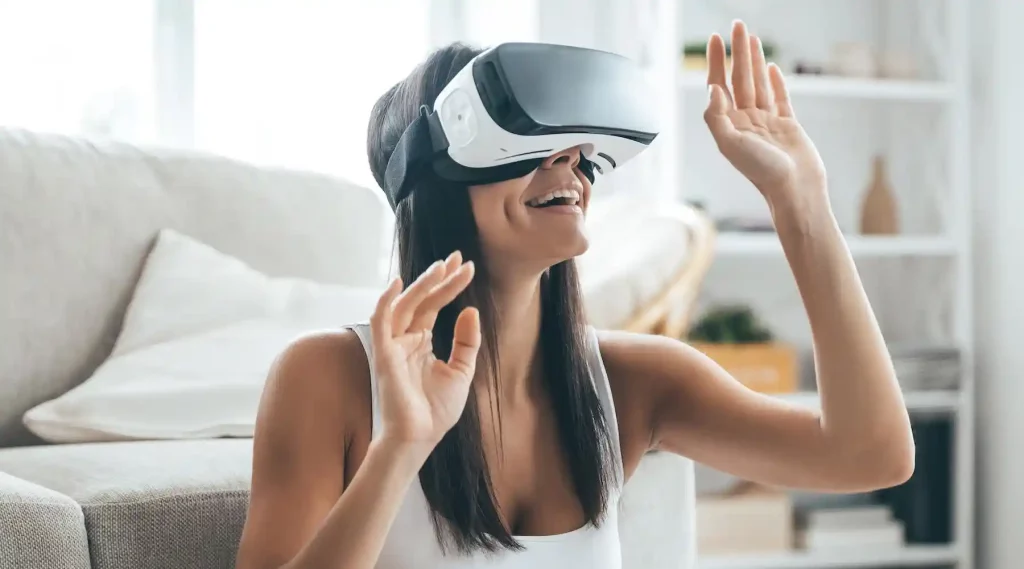Virtual reality (VR) is transforming how people interact at events. CM&D apart is a full-service VR production studio that can create anything from hyper-realistic virtual worlds to low-poly smartphone-friendly 3D models. They also provide customized pricing.
The easiest way to use VR at hybrid events is by streaming a 360-degree video. This allows attendees to view the environment, but they can’t interact with it.
1. Immersive Learning
Immersive learning is a highly effective way to teach, train and upskill employees. Research has shown that active, immersive learning is far more effective than passive learning, bringing about true knowledge retention and transfer to live situations. This is because immersive learning drops a learner into highly relevant scenarios, making them want to engage and respond.
Immersion-based eLearning has the power to teach students the scientific principles that underlie real-world practices. Using immersive virtual reality experiences like those from Strivr’s VR education platform allows teachers to take students on field trips to watch volcanoes erupt in Geography, scale Mt. Everest in Science, swim with sharks in Biology or boost creative writing skills through a virtual art gallery experience.
Moreover, immersive simulations offer a safe space to practice critical thinking and valuable soft skills without the risk of repercussions. This freedom, akin to psychological safety, helps learners feel empowered to experiment and try new things. When combined with learning and assessment feedback within the virtual world, it also helps learners to self-correct, ensuring they are receiving the right level of support.
Furthermore, the frequency with which employees access and interact with their immersive learning content offers a clear picture of how well they are engaging with training. This data provides insights into what is working and what isn’t, allowing L&D teams to personalize employee learning pathways accordingly.
2. Team Building
Whether they’re a separate event or a supporting program to a holiday party or team retreat, team building is an essential part of company culture. It unifies a group of employees, fostering communication and creating trust within the organization. Team-building activities help to break down barriers, increase engagement, and maximize efficiency in the workplace.
Team-building experiences are also a great way to break up the monotony of day-to-day work and get everyone out of their comfort zone. Some common team building activities include physical challenges, such as a climbing session, or group-based games like the lightning scavenger hunt. However, it’s important to be aware of your employees’ capabilities and comfort levels so that no one feels intimidated or excluded from an activity.
When done well, strategic team-building will help employees become more familiar with their colleagues’ strengths and weaknesses as they work together. This will allow them to communicate more effectively and reach their desired goals as a team.
To ensure that your VR development project is a success, you’ll want to partner with a virtual reality developer who cares about the quality of their work. Mobilunity is a local development agency with years of experience, and they understand the unique needs of their clients’ projects. They use the latest technologies and software to deliver top-quality solutions. They’ve worked with a wide variety of businesses and offer competitive rates on their VR development services.
3. Entertainment
Adding vr events is an easy way to increase attendees’ engagement. From gaming to virtual reality experiences, VR offers new ways for people to enjoy their favorite media.
While VR is most famous for games, it can also be used for immersive entertainment, such as virtual tours and movie theaters. These experiences can even be interactive, which adds a whole new dimension to the experience.
For example, in VR, attendees can walk around a 3D model of a building. This allows them to get a feel for the space and decide whether it meets their needs. The architecture industry is already using this technology to communicate their vision before ground is broken.
Many companies are also using VR to create virtual art exhibits. VR is a powerful tool for creating unique and surreal environments born of an artist’s imagination. Combined with a sound system, these environments can be extremely effective for creating an immersive art exhibition.
VR can be used to provide a more engaging networking experience for event attendees. It can be used to transform traditional networking activities such as speed networking and icebreaker games. Additionally, it can be used to provide product demos and brand storytelling. VR is a great way to make a lasting impression on attendees and increase the likelihood of converting them into paying customers.
4. Product Demonstration
During product demonstrations, brands can introduce products new to the market or revise existing ones. The purpose is to encourage customers to buy the product by explaining its main functions and highlighting its advantages over similar alternatives. Product demos can be a video presentation, an interactive online meeting with someone from the support or sales teams, or even a live event at a store or trade show.
In-store product demonstrations are a great way for a company to directly appeal to customers in their own community. They can also combat product concerns about claims or performance capabilities. People who have first-hand experience with the product will be able to dispel preconceived ideas and misinformation. Additionally, a product demonstration can help a customer connect with the feeling of ownership. This is especially true for unique design features that can have a big impact on a potential sale.
Virtual product demos are a great option for companies looking to reach audiences that cannot physically attend in-person events. They are also the ideal choice for people who want to experience a new product before they buy it. In addition, they allow for instant feedback that can be used to improve a product or identify new audience demographics. For example, a virtual product demonstration can be designed to capture customer interest, encourage them to subscribe to marketing emails, and ultimately make a purchase.
